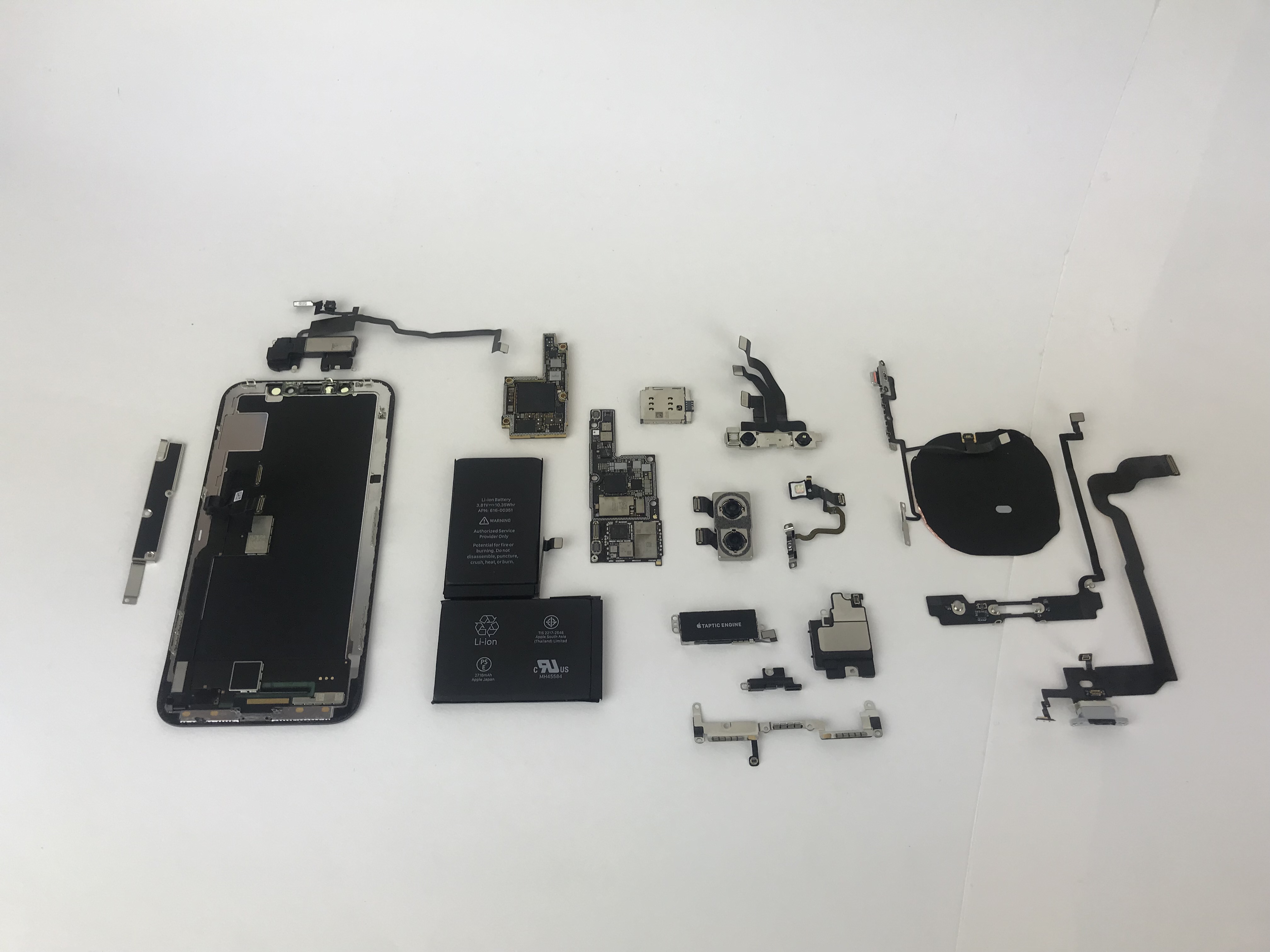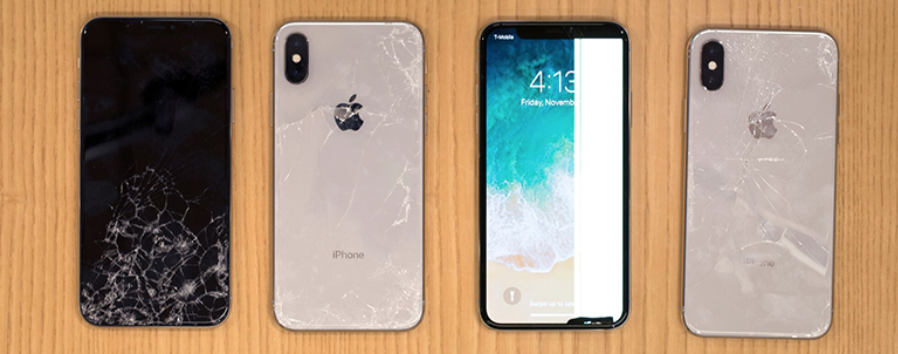The iPhone X’s Back Glass Is Fragile and an Expensive Nightmare to Repair
Credit to Author: Matthew Gault| Date: Wed, 08 Nov 2017 19:54:45 +0000
Apple’s $1,000 iPhone X has hit the market and it’s certainly a phone. It makes calls, takes pictures of dogs, and is encased in a glass shell so fragile users are almost guaranteed to break it. It’s a beautiful phone, but very delicate. It’s like a Fabergé egg you can use to tweet.
“The iPhone X is easily the least durable iPhone made yet in my opinion,” Aakshay D Kripalani, CEO of Injured Gadgets—an independent cell phone repair service based out of Georgia—told me via a Facebook message. “Especially with the entire back being made of glass.”
The new phone’s glass back is gorgeous, but also makes it vulnerable. Every drop test across the web has reached the same conclusion—Apple’s best phone is also its most fragile.
There are two things to keep in mind when it comes to repairing the iPhone X: The act of repairing the phone’s screen and front glass is about as easy as repairing any other iPhone’s screen, but the new OLED display is so high-tech that it will be prohibitively expensive to repair for at least a while.

And the back glass is fragile and extremely difficult to repair. The back glass is connected to the iPhone X’s housing with both glue and tiny welds, meaning there’s unlikely to be a simple way of removing and replacing it anytime soon.
To put this in perspective: When we embedded with iFixit during its iPhone X teardown in Australia, teardown engineer Jeff Suovanen was able to get the back glass off—after spending more than an hour alternately shooting it with canned air and blasting it with heat in an attempt to create a small sliver that he was able to slide a razor blade into. Then he pried. He got the glass off, but had to break off the camera housing and break through tons of tiny little welds holding the glass onto the housing. The glass was removed, but there was no clear path to putting it back together.

So what’s an Apple aficionado to do once they shatter their shiny new toy? Well, Apple would love for you to send it into an officially licensed dealer to handle the repair. The problem is that those repairs are often pricey and official dealers aren’t plentiful in some parts of the country.
People living in Nebraska or the Dakotas might have to drive into a location a state away and stay overnight in a hotel only to learn the officially licensed Apple repair shop closest to them has to send their broken phone away to Apple anyway.
Worse, the price to repair an out of warranty iPhone X is incredible. Replacing the iPhone X’s screen will run you $279 at an Apple Store. Because there are no great third-party, aftermarket screens available out of China yet, independent repair companies aren’t likely to be able to compete with that price anytime soon. According to several Chinese suppliers on Facebook—who are advertising their wares in repair groups—replacement front displays are selling wholesale to repair shops for roughly $550.
This point—that the iPhone X’s screen is mechanically repairable but at an extraordinary cost—is something that came up over and over again during iFixit’s teardown of the device in Australia (Motherboard tagged along for the visit). Whether the overall price of repair should be taken into account in the company’s “Repairability Score” is something the company’s CEO, Kyle Wiens, considered during the teardown. Ultimately, he and his team decided not to penalize Apple for using premium components, but did decide—for the first time in recent memory—to recommend that users buy a case to protect their investment.
It’s a completely different story when you consider the back glass of the iPhone X, which will be both expensive and extremely difficult to repair. Apple plans to charge $549 to replace a cracked back glass, and it remains to be seen whether third party repair shops will be able to reliably perform this repair at all (with difficult repairs in the past, Apple has simply replaced the device—we don’t know yet whether the company will actually repair broken devices or will replace them altogether).
Apple has increasingly made it difficult for these companies to offer cheap and effective alternatives to the consumer. It aggressively lobbies against right to repair laws and recently pushed out an iOS update that insinuated it could brick phones repaired using unauthorized parts.
“When we tore the iPhone X down I did not attempt to remove the back as it appears to be very tedious,” Kripalani told me. “Additionally when I tried to remove the rear facing camera it seemed very snug to the back. I didn’t want to damage those.”
Kripalani isn’t alone. “From what I can see, it’s going to be a difficult repair,” Michael Oberdick— owner and operator of iOutlet, an Ohio-based preowned iPhone retailer and repairer—told me. “The way it adheres to the frame makes it difficult to get it off. To readhere another one, you have to get all the glass shards off the frame and put a whole new one on. It’s going to be an extremely difficult repair.”
If a repair shop will have a hard time replacing the back, then a handy consumer will find it almost impossible. “The glass is held between the phone body and the camera bump housing,” Kay-Kay Clapp of iFixit told me via email. “So you have to pop the camera bump off in order to remove or replace the glass. There’s no way to restore the camera bump to factory unless you have a tiny spot welder, but you could try gluing it back on. The glass itself takes a TON of heat and very careful prying to remove without shattering it. When we removed the back glass on the iPhone 8 Plus, we ended up breaking it.”
Clapp told me the whole process would be very difficult and tedious for a consumer to do on their own. “If you could find a cheap donor phone with a broken screen but an intact back, that’s a good way to do the replacement,” she said. At $1,000 a go, it’s not likely there’ll be many discarded iPhone X’s out there in the near future.
Kripalani isn’t hopeful either and he doesn’t see many good options for the consumer. “[They] will be stuck spending $250+ if they went to Apple for the repair,” he said. “A repair store should comfortably be able to charge $150 for this type of repair. Assuming the cost of the part is $50 or less it is still profitable. Yes there are risks involved, but I feel like they are controlled risks…
the only loser in this scenario is the consumer.”